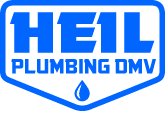Access to hot water, whether for hand washing, showering or doing the laundry, has become an essential part of everyday living. It’s therefore necessary to keep your water heater in good working order at all times. To do so, you should have a basic knowledge of the key parts of a water heater. (You should also keep a water heater maintenance checklist to extend the lifetime of your appliance).
This guide explores the basic parts of a water heater, specifically electric water heaters. If you have a gas water heater, check out our article on the parts of a gas water heater.
Watch the video below, or keep reading to learn the 7 fundamental parts of a water heater.
Essential Parts of a Water Heater
- Shutoff valve. Your water heater features a cold water inlet, which allows you to shut off the hot water to your house. Shutting off the water supply is an important first step for DIY maintenance projects that require access to certain parts of a water heater.

- Wire system. The wire system goes into the water heater. It’s a 240-volt wire that’s connected to a 30-amp breaker inside the breaker panel. It has three wires: two hot and one ground. The hot wires connect to the top of the water heater thermostat. The ground wire connects to the tank, grounding it to the electric panel.

- Thermostat and element. The element is responsible for heating the water, and the thermostat turns the element on and off. In most water heaters, there are actually two thermostats and two elements. The second thermostat will turn on if the water requires further heating. (If your hot water is not working correctly, water heater element testing is a good first step in determining if one of these critical components is the issue.)

- Drain. The drain is located at the bottom of the water heater. The manufacturer recommends you drain the sediment that collects at the bottom of the tank every 12 months. If minerals are left to build up, your water heater could begin leaking.

- Temperature and pressure (T&P) valve. If the water temperature or pressure inside the water heater increases too much, the T&P valve will flip up, allowing water to drain. It’s important to note that if the T&P valve is ever tripped, the manufacturer recommends you replace it with a new one. If the T&P valve deteriorates, it will dump water onto the ground, which can be dangerous because the water temperature can rise to about 200 degrees.

- Cold water inlet pipe. The cold water inlet pipe extends from the top to the bottom of the heater. It prevents cold water from diluting the hot water when you turn on your faucet. As you draw water, it pushes the hot water to the top, so you have 50 gallons of hot water available when you take your shower.
- Information plate. Each water heater includes a plate with information, including:
- Water capacity
- Gas or electric
- Model number
- Production date
- Serial number

If your heater is electric, the information plate will list the voltage. If it’s a gas heater, it will say either “LP” or “NG”. LP means liquid propane, and NG means natural gas.
How old is my water heater?
Usually, the first numbers listed on the information plate are the production date. However, you might want to double-check by Googling the water heater manufacturer. It’s important to know how old your water heater is. We strongly recommend replacing your water heater every 10 to 12 years, which is typically the full span of a water heater’s life.
Now that you know the basic parts of a water heater, you’re on your way to maintaining a well-functioning system that will keep your water warm throughout the full lifespan of the water heater.
If you run into an issue and need water heater repair in Montgomery County or a professional plumber in Germantown, MD or the surrounding areas, contact Heil Plumbing today.
Related articles/videos:
- How Does a Tankless Water Heater Work? 3 Benefits and Myths
- Hot Water Not Working? 7-Step Electric Water Heater Element Testing Guide
- How to Drain a Water Heater
- How to Reset Electric Water Heater With Electric Water Heater Reset Button
- How To Light a Pilot Light on a Water Heater
- The Essential Water Heater Maintenance Checklist
Heil Plumbing is a family-run company owned by a third-generation master plumber. We can help you with a full range of plumbing services, including toilet installation and repair, leak detection and pipe repair, water heater repair and installation, faucet repair and installation, drain cleaning, water treatment services, and more.
Recent Posts
- 3 Ways to Replace Water Shut Off Valve: Plumbing SharkBite, Compression Valve, and ProPress Method [Video]
- How to Winterize Your Plumbing: 3 Quick Tips To Prevent Winter Woes [Video]
- How To Remove a Hose Stuck on Spigot in “10 Seconds” [Video]
- 2 Fixes for a Garbage Disposal Not Working + What To Do With a Clogged Garbage Disposal [Video]
- Hot Water Not Working – 7-Step Electric Water Heater Element Testing Guide [Video]
- How To Replace a Sump Pump Like a Professional (Easy Pictorial Guide) [Video]
- How to Replace Bathroom Pipe Nipples and Install Water Shut-Off Valves [Video]
- Fix-It Guide: How to Unclog a Bathroom Sink [Video]
- Sink Clog Emergency – How Much Does a Plumber Cost to Unclog a Drain [Video]
- Is Hose Water Safe To Drink – Quick Check Before You Try [Video]


